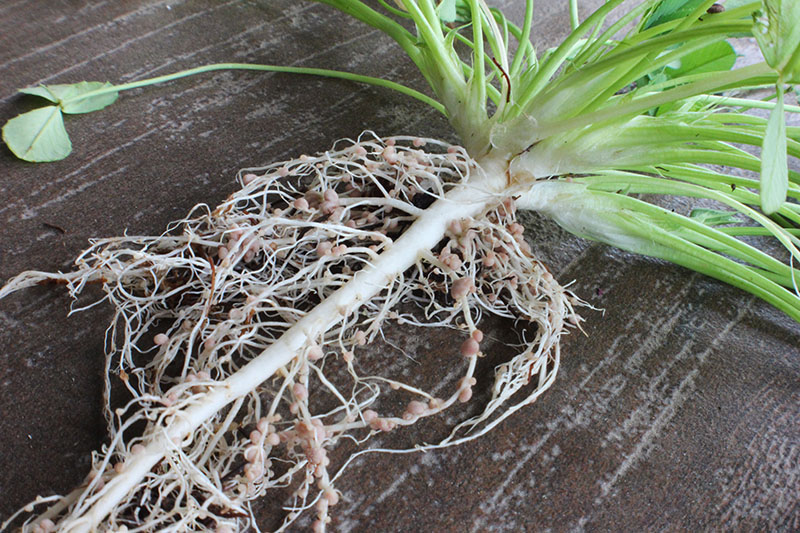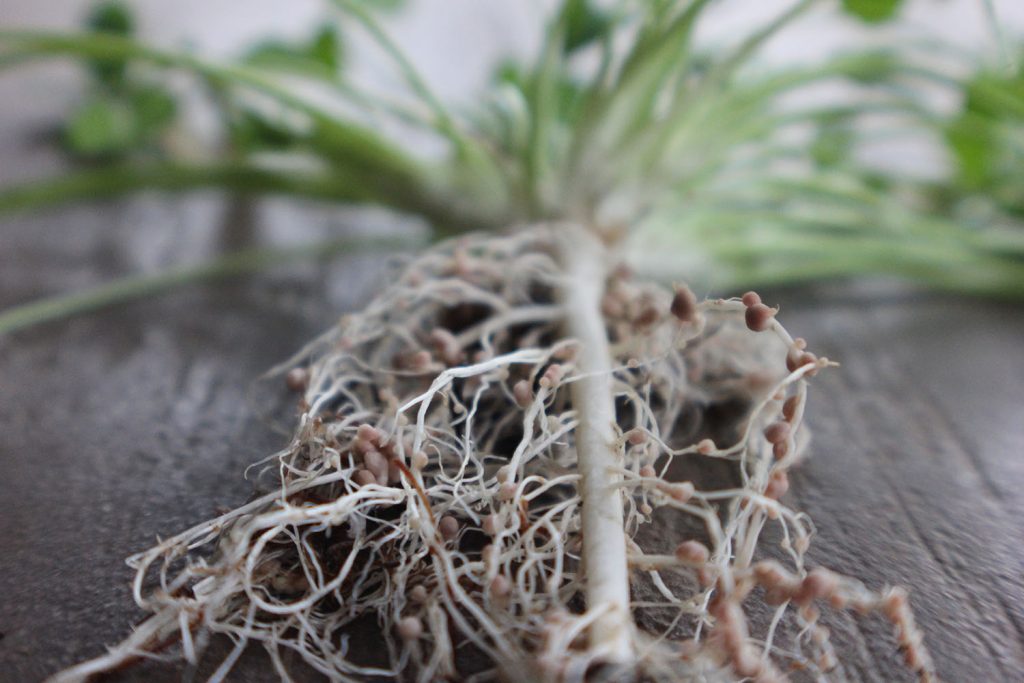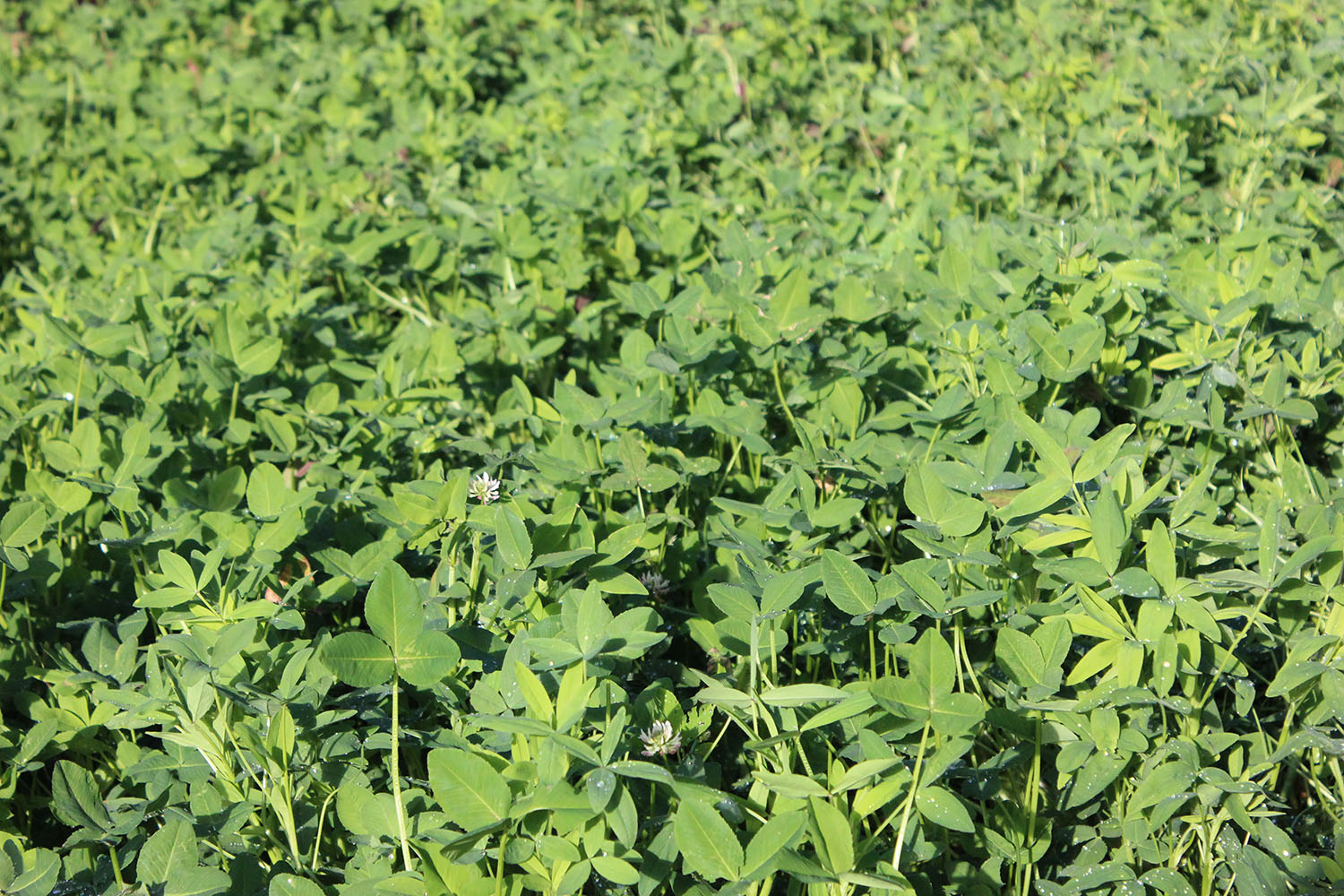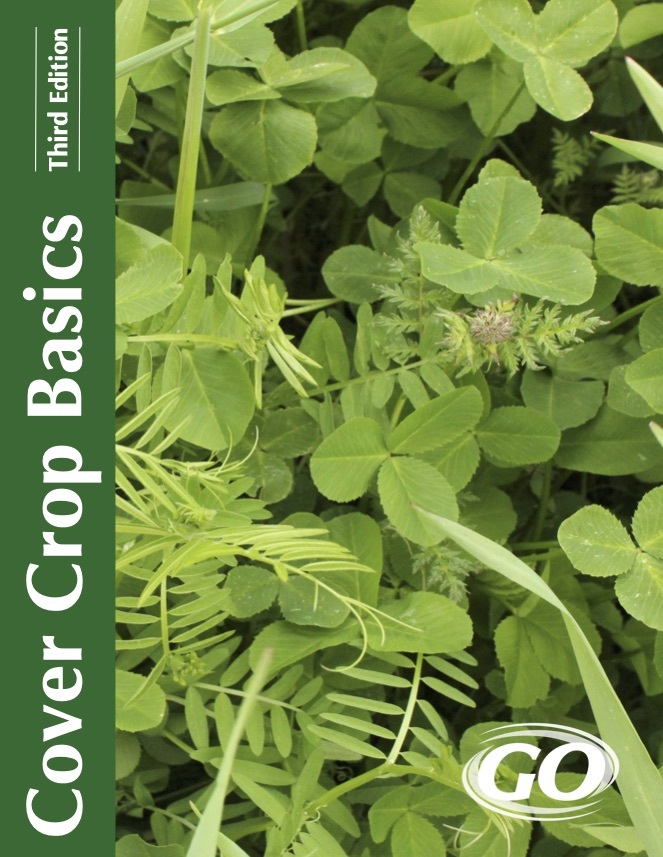It’s widely known that legumes have a symbiotic relationship with soil bacteria, known as rhizobia. When clover seeds germinate, their roots release compounds that attract and allow infection by rhizobia bacteria. Each legume species can associate with several different rhizobia, but not all rhizobia fix nitrogen at the same rate. To get optimal nitrogen additions, they must be properly inoculated with specie specific rhizobia.
The rhizobia enter the root hairs. In response, the plant forms small nodules along its roots to house the bacteria. These nodules act as tiny nitrogen-fixing factories. The root nodules persist for the legume’s lifetime, transforming atmospheric nitrogen to plant available nitrogen while the plant is actively growing and photosynthesizing. The plant stores this nitrogen in the above-ground plant biomass. The greater the biomass, the greater the nitrogen stored. Some species can store more nitrogen in a pound of biomass than others. When the legume dies or is terminated, the plant biomass is decomposed by soil microbes, releasing the nitrogen fixed by the rhizobia into the soil for use by subsequent crops.

Professor Dr. John Jennings of the University of Arkansas System Division of Agriculture, Little Rock writes, “Most of the N is found in the top growth of the plant with a smaller amount in the crown, roots and nodules. Estimates for perennial legumes show that about 75-80% of the plant’s N content is in the top growth. Texas A&M research showed that in crimson clover (a winter annual clover) about 90% of the total N was in the top growth and only 10% in the roots.”*
Understanding that a significant portion of the fixed nitrogen is transported into the clover’s above-ground biomass (the stems, leaves, and flowers) gives a greater understanding of ways to maximize N from the cover crop. FIXatioN Balansa Clover, Frosty Berseem Clover, eNhance Persian Clover, and Survivor Winter Pea are known for substantial nitrogen additions because of their abundant leafy growth.
The stored nitrogen stays trapped until the clover begins to decompose after termination. To capture the maximum nitrogen contribution from the above-ground growth, terminate annual legumes at bloom stage. As the plant matter breaks down, it will slowly release the sequestered nitrogen for use by the subsequent crop.
Removing the above-ground biomass of the legume cover crop for hay or silage will reduce a significant amount of nitrogen that the cover crop could have fixed. Leaving the residue and planting green into it could maximize the benefits to the cash crop. Dr. Jennings notes, “To release the fixed N in clovers for use by other forages, the topgrowth must be recycled through grazing animals or through plant decomposition. When hay is harvested, most of the N is removed from the field.”
With proper management, legumes can be excellent nitrogen sources and extremely beneficial cover crops for improving soil fertility in your cropping systems.

* Jennings, J. (n.d.). Value of nitrogen fixation from clovers and other legumes (FSA2160). University of Arkansas Division of Agriculture Cooperative Extension Service.


